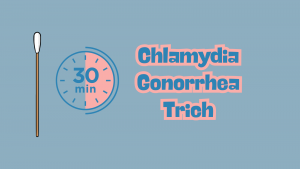
Talking Birds and Bees in the 21st Century
Why are STI rates so high among young people? For insight we chatted with Dr. J. Dennis Fortenberry, a Professor in the Department of Pediatrics at the Indiana University School of Medicine.

Health care providers may soon have a new weapon against drug-resistant gonorrhea (a.k.a. “super gonorrhea”). A clinical trial found that a new antibiotic—zoliflodacin—is as successful in treating gonorrhea as the current option. This is a huge step forward, as the bacteria that causes gonorrhea has steadily become resistant to most existing antibiotics, making the infection increasingly difficult to treat.
Gonorrhea is the second most common bacterial STI reported in the United States. There were 710,151 cases of gonorrhea diagnosed in the U.S. in 2021, a 28% increase since 2017. But since many people with gonorrhea have no symptoms, there are likely far more cases than reported each year. The CDC estimate 1.6 million cases of gonorrhea per year in the U.S., while the World Health Organization (WHO) estimates more than 82 million new cases globally.
Gonorrhea is curable, but if left untreated it can cause long-term health issues. The bacterium that causes gonorrhea—Neisseria gonorrhoeae—has steadily become more difficult to treat as it has developed resistance to whole classes of antibiotics.
As early as the 1940s, Neisseria gonorrhoeae was resistant to sulfanilamides. By the 1980s it was resistant to penicillins and tetetracyclines. In 2007, the CDC stopped recommending fluoroquinolones, leaving only cephalosporins as effective treatment against this common STI.
In January, the Massachusetts Department of Public Health detected a strain of gonorrhea in two patients that showed reduced response to five classes of antibiotics. While such strains had been seen elsewhere in the world, this was the first case in the United States. The patients were successful treated with existing medication, but public health experts warned about the possibility of future cases.
That’s where zoliflodacin could help. This is not just a new antibiotic but the first in a new class of antibiotics called spiropyrimidinetriones. It is being developed and tested by a partnership between the Global Antibiotic Research & Development Partnership—a nonprofit set up by the WHO—and the U.S.-based Innoviva Specialty Therapeutics. The goal of the nonprofit was to help encourage the development of new antibiotics as these drugs do not have the potential profit of other medical breakthroughs.
The clinical trial included 930 participants with gonorrhea at 16 trial sites in five countries including the United States. They were randomly assigned to get either the single dose of oral zoliflodacin or a shot of ceftriaxone combined with oral azithromycin. The results showed that new medication was equally effective as the existing drug. However, the study did find that zoliflodacin was less effective against gonorrhea of the throat than it was for infection of the genitals or anus.
This is a major breakthrough, as widespread use of this new drug could not only treat gonorrhea but also prevent the spread of resistant strains. Because the drug was specifically created for—and will only be used to treat—gonorrhea, it may be longer before the bacteria is able to develop resistance. In contrast, ceftriaxone and azithromycin are used against other infections, and the more they are used, the more opportunity gonorrhea has to develop resistance to them.
Edward Hook, MD, an emeritus professor of medicine at University of Alabama and former ASHA board member, served as the protocol chair for the study. Hook told ASHA, “It has been at least 25 years since the last time a new antibiotic was approved for gonorrhea therapy. During that time the challenge of progressive antimicrobial resistance in Neisseria gonorrhoeae has created more and more challenges for clinicians. This drug represents a long awaited potential next step in treatment of persons with gonorrhea.”
Zolifodacin could be on the market as soon as 2025.

Why are STI rates so high among young people? For insight we chatted with Dr. J. Dennis Fortenberry, a Professor in the Department of Pediatrics at the Indiana University School of Medicine.

The FDA just approved a new, fully at-home test for chlamydia, gonorrhea, and trichomoniasis. The tests, which is only for women, will be available without a prescription. Users can collect their own sample and have results in less than 30 minutes.

A new study found that opt-out screenings for all patients in emergency departments caught numerous cases of syphilis and HIV that would have gone undetected under other screening protocols.

A study revealed that the majority of young people would prefer testing for STIs at home over going to a doctor’s office or clinic.

Many STIs have no signs or symptoms in the majority of people infected. The only way to know if you have an STI is to get tested.

A completely at-home PCR test for chlamydia, gonorrhea, and trichomaniasis could allow people to test themselves and get results and treatment within a matter of hours.
ASHA believes that all people have the right to the information and services that will help them to have optimum sexual health. We envision a time when stigma is no longer associated with sexual health and our nation is united in its belief that sexuality is a normal, healthy, and positive aspect of human life.
ABOUT
GET INVOLVED
ASHA WEBSITES
GET HELP
© 2025 American Sexual Health Association